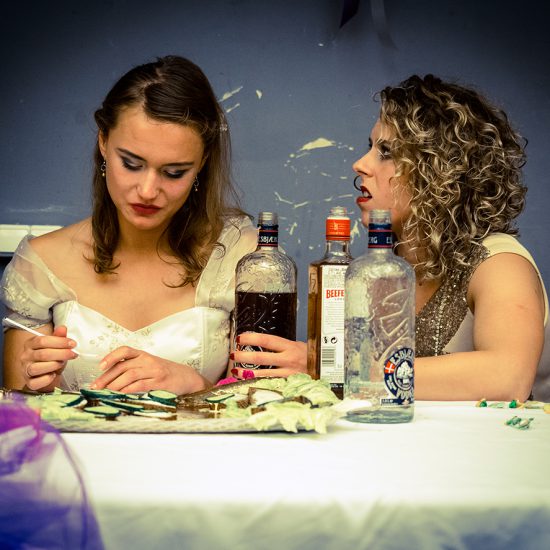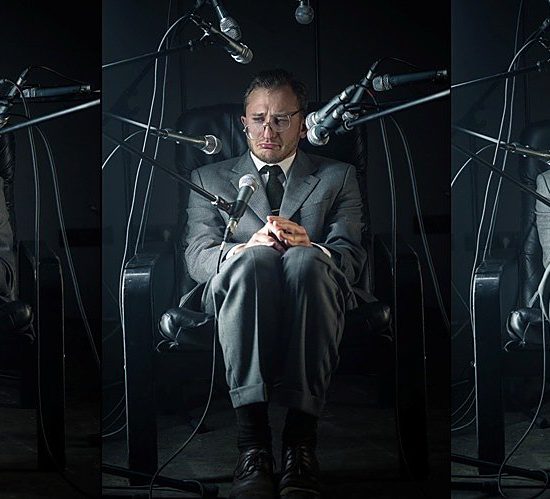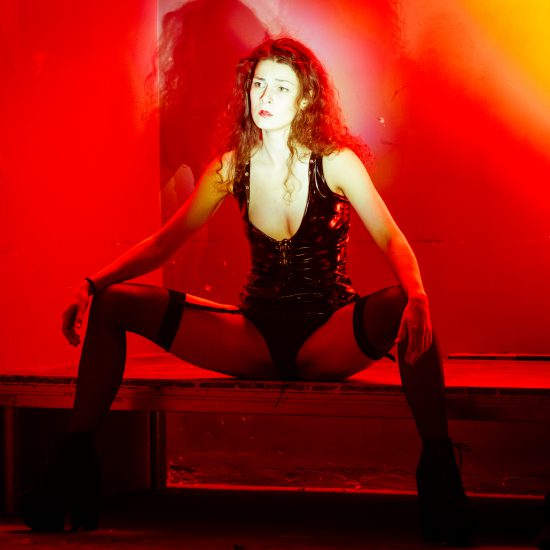Drunk with theatre “Hamlet” by Koršunovas
<…> When answering the question why he is engaged in theater, Oskaras Koršunovas has confessed that it saves him from alcoholism, because he does not drink while working. For the Lithuanian theater director, theatre really meant purification and salvation.
However, “Hamlet” talks about theater as an addiction. The necessity to act and lie, to pretend before everybody, including yourself. This “Hamlet” isn’t modern as the director has already exhausted Hamlet’s modernity in his earlier productions – from Koltés’ “Roberto Zucco” to the Presniakov brothers’ “Playing the Victim”. “Hamlet” as a myth of the generation is a thing of the past for Koršunovas. Now he is interested in what is theatrical and personal in the play. This Hamlet is an intimate confession read autobiographically. The stage adaptation does not add new themes to Shakespeare; it only pulls to the forefront discussions about acting and the world as a theater. The performance begins with a strong image as if taken from a room of distorting mirrors. On the stage – a series of tables, brought from the make-up rooms of the theatre. Actors are looking at their images and screaming: “Who are you? Who are you?” The first line of the Shakespearean tragedy becomes the key to the performance. It is a question one asks oneself, the other one inside oneself. <…>
Koršunovas invited Darius Meškauskas, an actor from Klaipėda, the director’s peer and scenic alter ego, to play the main role. Meškauskas resembles a tired clown, who has torn too many masks from his face, applied too many layers of make-up, so now every grimace is too demanding for him and everything must be learned from scratch. Koršunovas tells him to drink vodka from the bottle stashed in the make-up room, vomit in the trash bin, and feel the alcoholic stupor. In some scenes Koršunovas wants him to act as a director, in others as an actor, an extra, and, finally – a strange puppet. The famous “To be or not to be” is said twice by the actor. The first time he is melancholy and stresses “to be”, and the second time – enraged, jealous and miserable about the triumph of “not to be”. Only in the Hamletian theatre of Koršunovas the Shakespearean “to be” means “to play” that is to lie, and not to play simply means “not to be”.
Denmark, the theater and its wings, is neither a hideout nor a shelter for its heroes. Denmark is a prison. Theatre, which completely engages the people who create it, demands their love, life, health and stability. The director remembers his own experience: here comes an idealist rebel to the theatre and, twenty years later, he spits out the remains of a human being. In this interpretation nobody dies on stage. Theatrical death is a mystification. Or should it be viewed as a sign of artistic exhaustion. Koršunovas’ “Hamlet” tells about the emotional death of the characters playing the Danish tragedy, about death in the theater, which consumes and destroys people. Here Koršunovas is more ruthless than ever before. He says that this play was born out of fear that everything that is important to him, as a man and creator, is already in the past. He also stresses that he is still the voice of a generation that began to grow old before it matured. The artist himself did not appear at the premiere. And no one knew where he was.



